I'm trying to understand power budgets a bit better and I have a question regarding pullups. I have a input to a microcontroller that needs to be logic high at all times. The micro goes to sleep now and again, so the internal pullup isn't an option. Looks like so (wow that's big).

simulate this circuit – Schematic created using CircuitLab
I'm dealing with a low power, battery-operated system here (2 AA batteries), so every bit of power savings counts. My question is how to figure out how much current this draws. If I just look at V = IR, we're talking 30μA, which is actually a lot for this application.
What I don't really understand is how to factor in the microcontroller. I'm assuming there's something I need to factor in from the datasheet, but I don't know which elements are relevant.
The 100k resistor is from a reference design, but is there anything stopping me from putting a much bigger resistor to cut down on current draw?
These are probably basic questions, but I'm a software guy out of his element here, so bear with me.
Leakage
Based on some comments, it looks like leakage current is the microcontroller spec I should be interested in. Below is what I found in the datasheet. Is 3 nA the magic number?



